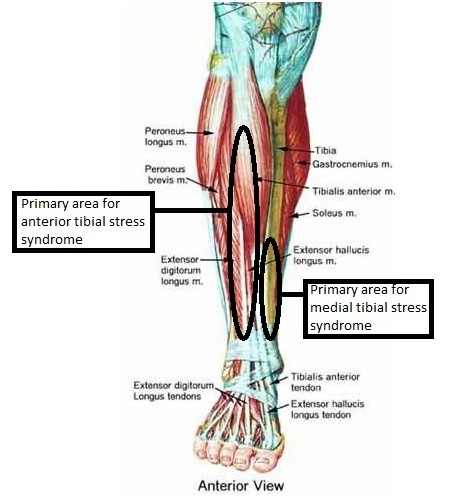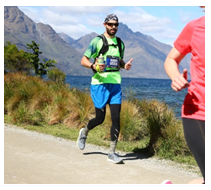Introduction
Tibial stress syndrome is a term that encompasses any overuse or repetitive overload injury of the posteromedial shin (medial tibial traction periostitis) or anterolateral shin (lateral tibial traction periostitis). The inside shin pain is more common and is usually termed in the general population as shin splints.
Incidence
- 10-15 % of runners
- Up to 60% of lower leg syndromes

- Females have a higher incidence rate when compared to males
Risk factors
- History of previous lower leg injuries
- Improper running technique/form
- Less than optimal running cadence
- Training errors
- There is suggestion regarding foot type and dynamic foot movements during running
Causes
- Muscular imbalances around the hip, knee and ankle
- Traction injury to the outside of the bone caused by the muscle pulling excessively
Symptoms
- Diffuse pain localized to the inside of the lower shin (medial tibial traction periostitis)
- Made worse by running initially but when the area warms up it tends to improve
- Once the exercises is ceased the pain returns and is usually higher in intensity
- It can also be aggravated by jumping or high intensity ballistic type exercises
Treatment
- Activity modification initially
- Keep a thorough training dairy with emphasis on symptom resolution
- Physiotherapy modalities addressing muscle imbalance and core activation
- Running technique retraining (if appropriate)

- Corticosteroid injections (if appropriate)
Possible complications
- If not addressed appropriately then recurrence can be high and progression on to a tibial stress fracture is possible
What should you do next?
If you are feeling pain, discomfort and/or stiffness in your calf, shin or lower leg region then I recommend you get in contact with us at the clinic and we will be able to help you moving forward with your rehabilitation.
#Acceleratephysio #ShinSplints #RunStrong #MTSS
Until next time,
Joel
Physiotherapist & Exercise Scientist
Certified Professional with “The Running Clinic”
